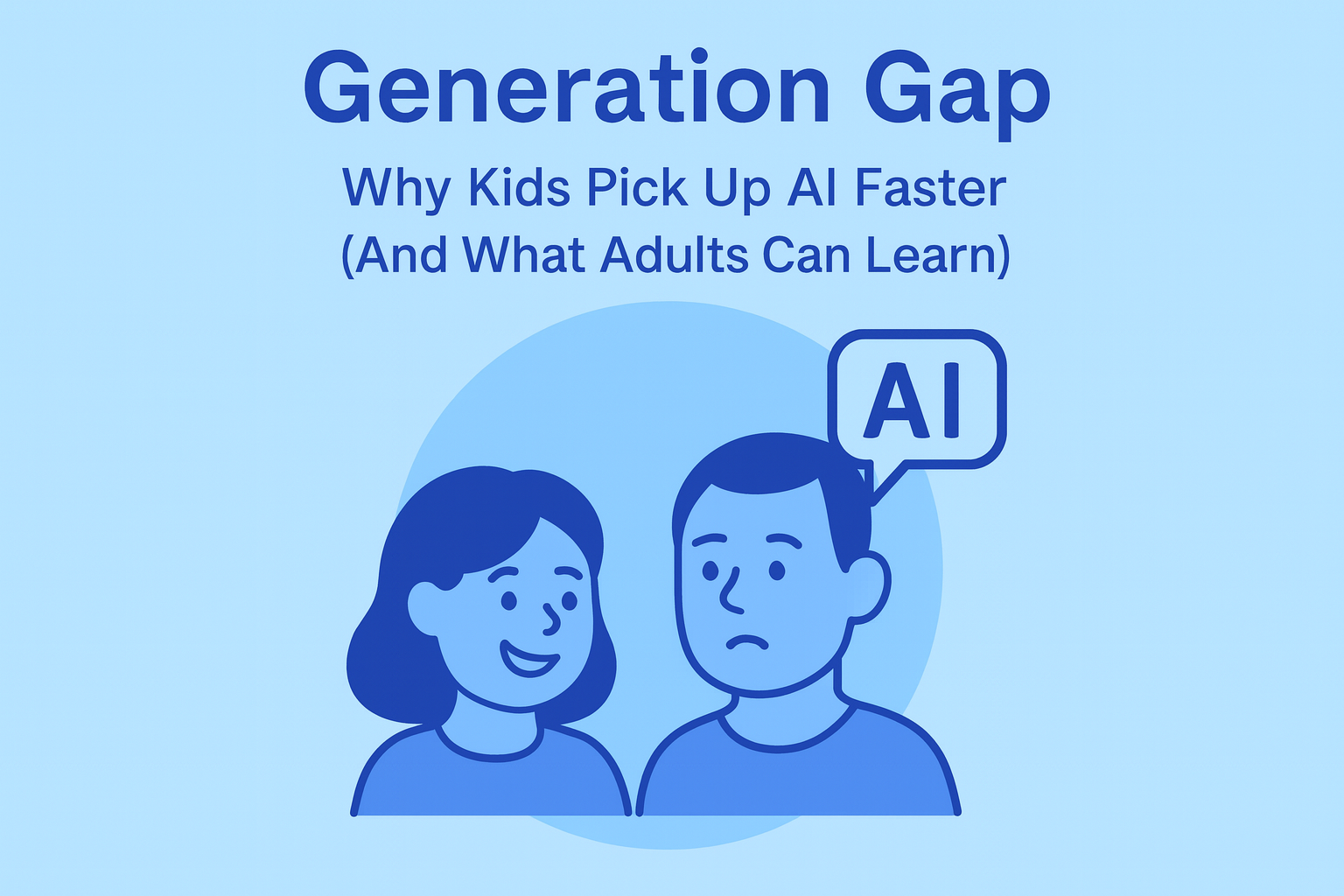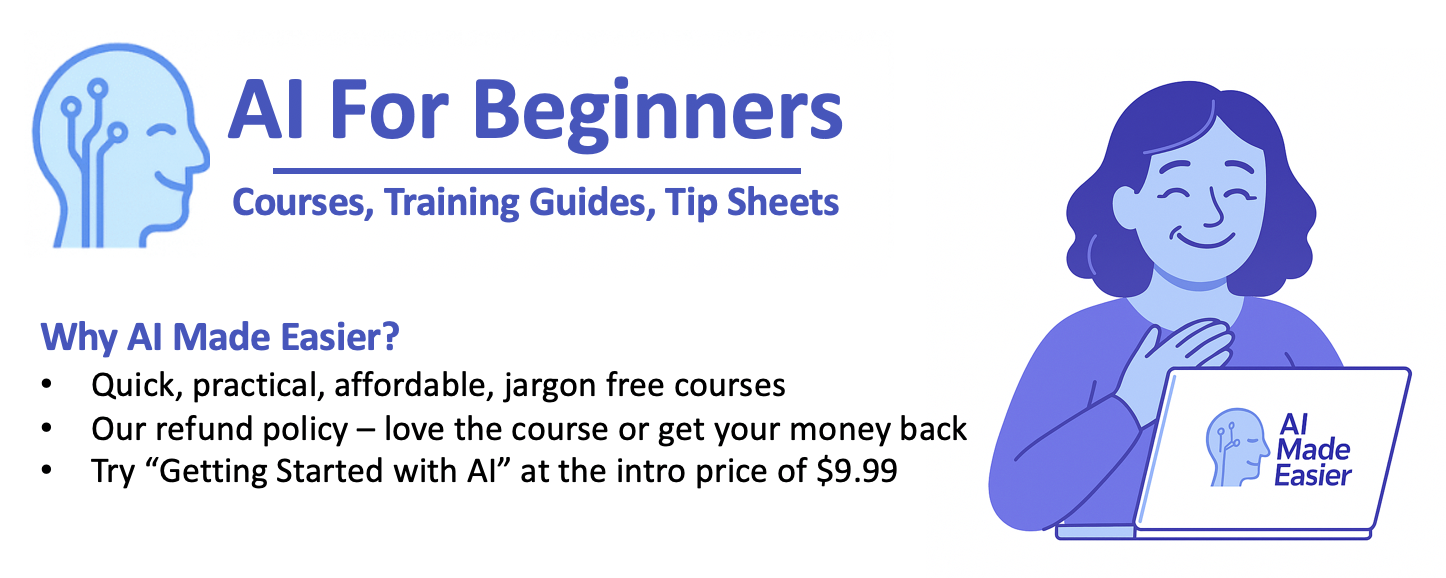Generation Gap: Why Kids Pick Up AI Faster (And What Adults Can Learn)
Spoiler: It’s not about being “tech-savvy” — it’s about being fearless.

Last week, I watched my neighbor’s 10-year-old casually ask ChatGPT to explain photosynthesis “like a rap battle between plants and the sun.” Two minutes later, she was giggling at an AI-generated song about chlorophyll.
Meanwhile, her dad was still reading the same “Getting Started with AI” article he’d bookmarked three months ago.
Sound familiar?
The Kid Advantage: It’s Not What You Think
Adults often assume kids are naturally better with technology. But after watching hundreds of families navigate AI, I’ve realized it’s not about digital nativity or some magical generational superpower.
It’s about approach.
How Kids Approach AI
- “Let’s see what happens”
- Immediate experimentation
- Failure = fun, not embarrassment
- No preconceived limitations
- Play first, understand later
How Adults Approach AI
- “I need to understand this first”
- Research before trying
- Fear of doing it “wrong”
- Worry about consequences
- Understand first, play later
Why the Adult Approach Backfires
Don’t get me wrong—adult caution has its place. You wouldn’t let a 10-year-old handle your taxes or medical decisions. But with AI, our natural risk-assessment can become a roadblock.
We overthink the stakes. AI tools like ChatGPT aren’t going to break your computer or charge your credit card if you ask them a weird question. The worst that happens? You get a weird answer and try again.
The Fear Factor
Adults worry: “What if I ask it wrong?” Kids think: “What if I ask it something funny?”
That difference in mindset changes everything.
What Kids Do Right (That We Can Copy)
1. They Start Messy
Kids don’t craft perfect prompts. They just start talking to AI like it’s a friend. “Hey, can you help me with my math homework but make it about dinosaurs?”
2. They Iterate Fast
If the first answer isn’t quite right, they immediately ask again differently. No analysis paralysis—just rapid-fire refinement.
3. They Mix Serious and Silly
One minute they’re using AI for homework, the next they’re creating stories about their pet hamster becoming a superhero. Both teach them how AI works.
4. They Don’t Take It Too Seriously
When AI gives a weird answer, kids laugh and try again. Adults wonder if they’re “using it wrong.”
The Adult Superpower Kids Don’t Have
Here’s the thing kids miss: context and critical thinking.
My 14-year-old can generate creative prompts all day, but he doesn’t naturally think about fact-checking AI’s answers or considering whether information is current. He doesn’t automatically think about privacy implications or bias in AI responses.
That’s where adult wisdom shines. We bring:
- Real-world experience to evaluate AI suggestions
- Understanding of consequences and context
- Ability to spot when something sounds too good to be true
- Knowledge of when human judgment still trumps AI
The Sweet Spot: Kid Curiosity + Adult Wisdom
The most effective AI users I know combine both approaches. They experiment like kids but evaluate like adults.
They’ll playfully ask AI to “plan a dinner party for picky eaters” but then critically assess whether the suggestions actually work for their family and budget.
Try This Week
Pick one silly, low-stakes AI experiment. Ask ChatGPT to write a limerick about your morning coffee routine. Or have it create a superhero based on your job.
The goal isn’t the output—it’s practicing the “let’s see what happens” mindset without real consequences.
What This Means for Families
If you have kids, you’ve got built-in AI learning partners. They can teach you to experiment fearlessly. You can teach them to think critically about results.
If you don’t have kids around, you can still learn from their approach: lower the stakes, increase the experimentation, and remember that “getting it wrong” is just data for getting it right.
The Bottom Line
Kids don’t pick up AI faster because they’re smarter or more tech-savvy. They pick it up faster because they’re willing to look foolish while learning.
That’s a skill adults can learn too. We just need permission to play again.
Ready to Learn Like a Kid (But Think Like an Adult)?
Our “Getting Started with AI” course combines playful experimentation with practical wisdom. Perfect for adults who want to learn AI without the overwhelm—and maybe have some fun doing it.
Start Your AI Journey